In the city there are many colonial churches, most of them have a story to tell, therefore, you as a traveler and you are here in the Inca city you should visit the various places of interest such as the Temples and Churches of Cusco.
Table of Contents
As I told you to know these sacred places you must take some time and visit each of the temples, religious and archaeological sanctuaries, because some of these sites have a museum to visit and learn more about them.
With the arrival of the Spaniards in 1532, the Inca lands were distributed among the conquerors, and many of these lands were donated to different religious orders, such as the Franciscans, Dominicans, Jesuits, Carmelites, among others.
Thanks to the writings of the chroniclers, it is known that on December 8, 1535, by order of Queen Juana, Governor of Spain, Friar Vicente Valverde was commissioned to build temples and churches in the city, also with donations from the crown, each temple was to be decorated with fine works of painting, sculpture and altarpieces.
Making the historic center much more striking, by the presence of various temples and each of these, with the correct internal ornamentation.
The following is a list of the most outstanding temples and churches of the imperial city, with a brief historical review of each one of them. Without a doubt, it is an extra option to get to know the city from another perspective.
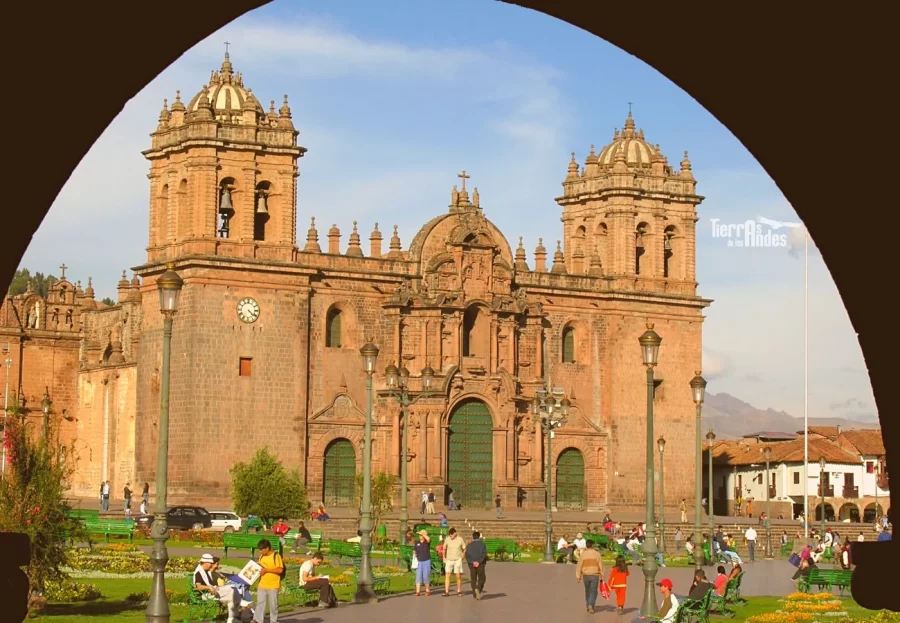
During the year 1559, the architect Veramendi began the construction of the Cathedral, moving the lithic pieces from the Sacsayhuaman complex to the main square.
The construction of the Cathedral took many years, so there were several architects and masters who were in charge of the construction of the most important temple of the city, in addition to the fact that the temple suffered the ravages of the strongest earthquakes, a fact that was captured in a painting of the year 1650.
Among the most impressive pieces of art are 256 pieces of pure silver, highlighting the float of Holy Week, the Anda de la Virgen de la Inmaculada Concepción, Las andas del Señor de los Temblores, Crowns, a silver monstrance adorned with 331 pearls, 62 rubies, 89 amethysts, 5 sapphires, an agate, 43 topazes. 263 diamonds, 221 emeralds and 17 diamonds. It is 1.20 meters high and weighs about 27 kilos.
In addition to multiple altarpieces worked with gold leaf, sculptures and canvases of the Cusco school.
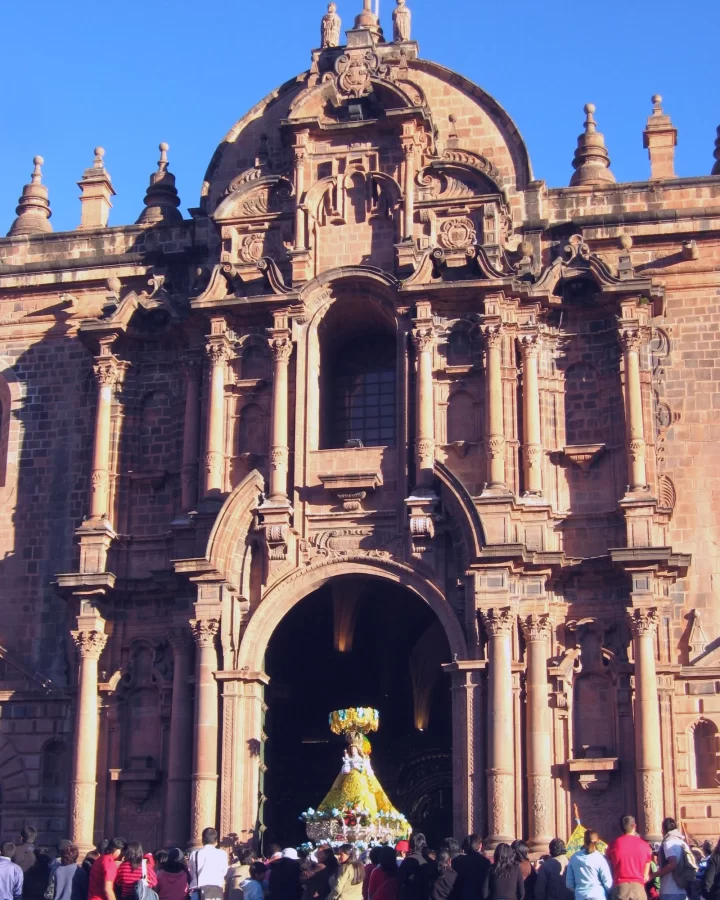
The church of Our Lady of Bethlehem was originally founded as an Indian temple called ''Los Reyes Magos'' in 1559 in the Inca neighborhood of Cayocachi.
In a painting of the Main Cathedral is the story of how this virgin was found by two fishermen in Callao, in a box floating in the sea, when they opened it they saw the image of the mother of Christ with a note that said ''Image of Our Lady of Bethlehem, for the city of Cusco''.
It was then when the bishop of Lima began the whole process to bring the image to the city of Cusco. Once the Virgin arrived in the imperial city, lots were drawn to decide which temple would receive the sacred mother of Jesus, and so the church of ''Los Reyes Magos'' was chosen, which would change its name to ''La Iglesia de Belén'' (The Church of Bethlehem).
It is known that this temple suffered great damages during the earthquake of 1650, but thanks to the bishop Manuel de Mollinedo, it could be rebuilt by the Cusquenian architect Juan Tomás Tuyro Tupac, being completely finished in 1715.
Unfortunately, the new earthquake of 1950 again wreaked havoc on the monument, knocking down one of its towers. The final reconstruction was in charge of the Cusquenian architect Óscar Ladrón de Guevara.
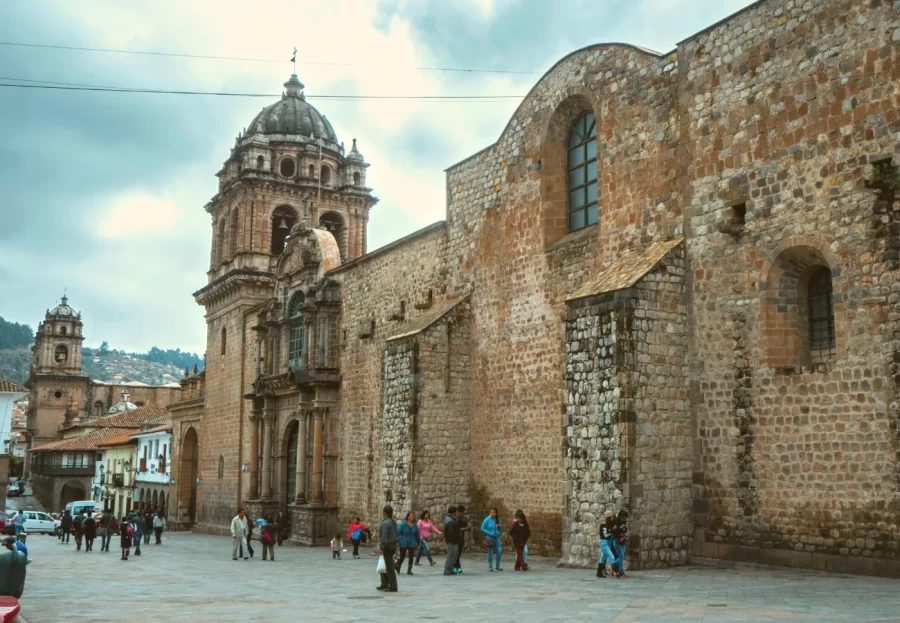
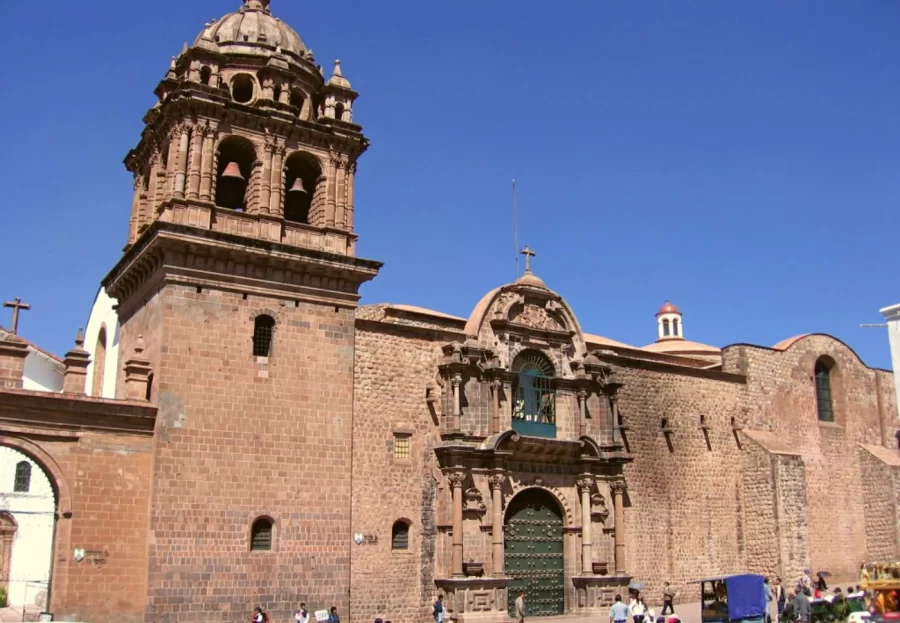
The Church of La Merced, belonging to the order of Mercedarios, founded by Father Sebastian de Trujillo in 1535, time later in 1538 Francisco donated the adjoining land of Cusipata for the construction of the first Mercedario Temple in the city of Cusco.
This temple keeps one of the richest custodians of the city with 1.20 meters high 22 kg. weight has an exquisite ornamentation of 1538 precious stones including rubies, emeralds, sapphires and others, additionally has the second largest pearl in the world.
Formerly, the temple had 4 cloisters, but due to the earthquakes of 1650 and 1950, only 2 remain today, one of which is the current La Merced boys' school.
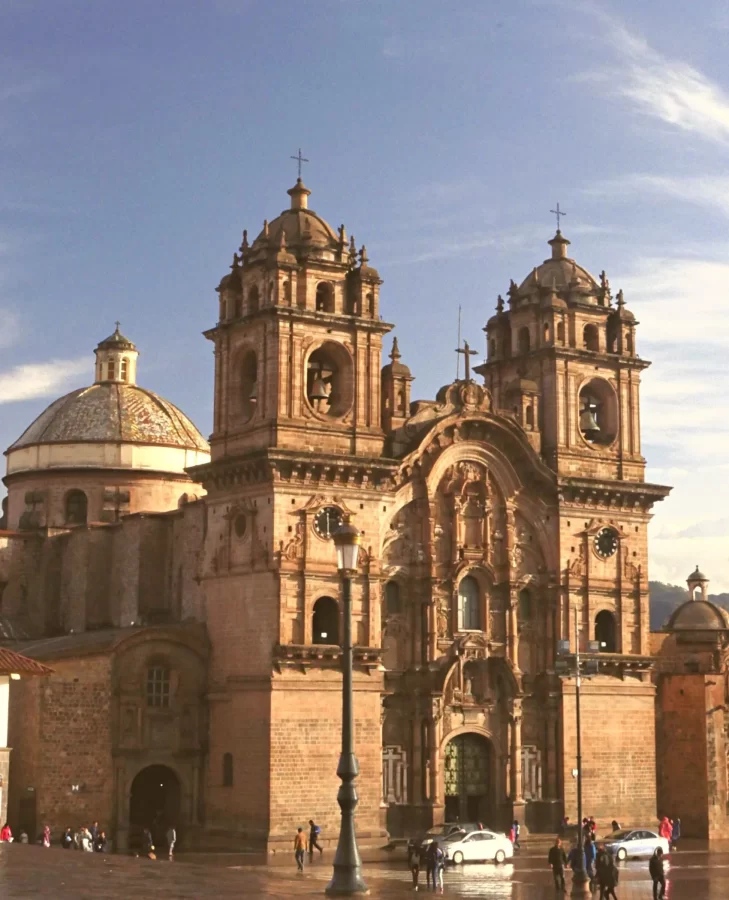
The Temple of the Society of Jesus, belonging to the Jesuit order, is built on the site of the ancient Amarucancha, palace of the Inca Huayna Capac.
The construction was completed in only 15 years, starting in 1578 with the support of the wife of Diego Silva, the conquistador, Doña Teresa Ordoñez, finishing the temple in 1593.
This temple is located in the Main Square of Cusco, has many pictorial treasures among them highlights the painting of the marriage of Martin Garcia de Loyola with the Coya Beatriz Clara, one of the first marriages between Spaniards and members of the royal Panacas, in addition to its altarpiece, which was worked by Bernardo Bitti with fine finishes in gold leaf.
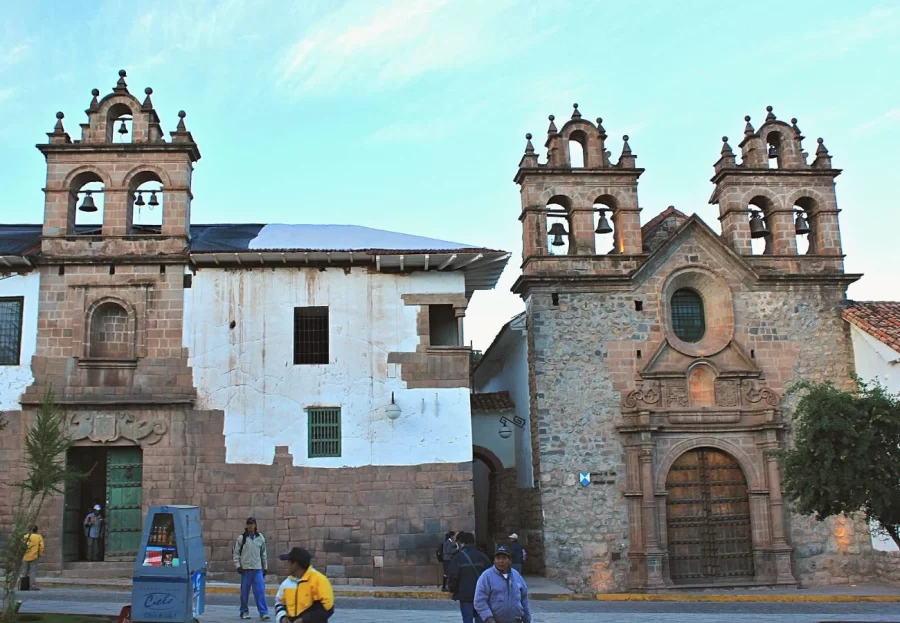
The beaterio de Las Nazarenas Descalzas was founded in the city of Cusco in 1695, under the Adjudication of the Santísimo Jesús Nazareno.
In 1745, the Nazarene Sisters received a new beaterio in La Casa de las Sierpes, located in Amaru Qhata Street. During the year 1900 it also functioned as a school for girls, considered the best in Cusco. Until it closed after the inauguration of the Santa Ana and Maria Auxiliadora schools for girls.
In 1978, there were less than 10 Nazarene Sisters left, so they decided to leave the monastery and were welcomed for a while in the Merced Church. Some time later they moved to the Church of San Francisco, where they were permanently welcomed until today.
Currently the Monasterio de las Nazarenas is a hotel belonging to the Belmond chain.
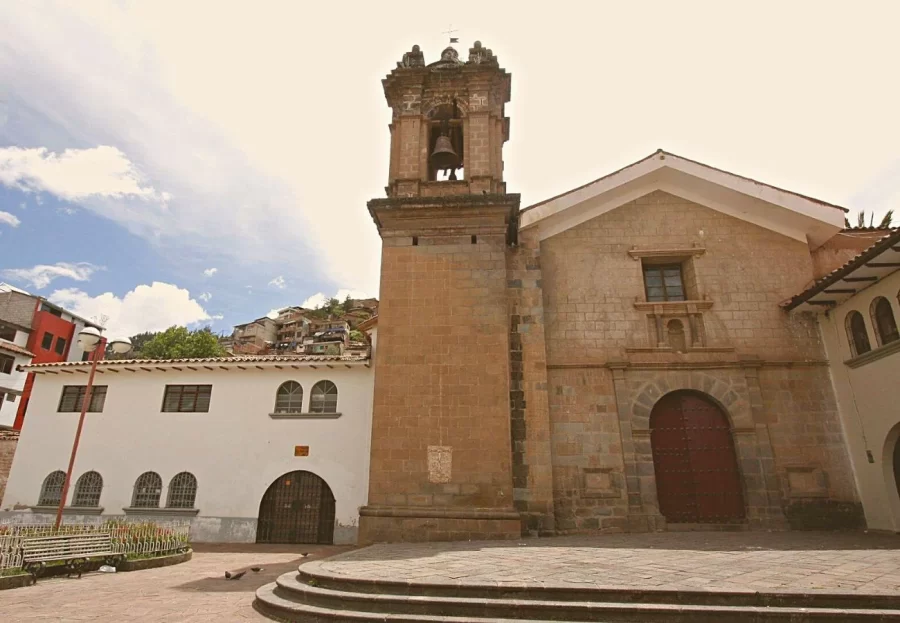
The Church of Cristo Pobre de la Recoleta, belonging to the Franciscan Order, is located in the Recoleta square, within the historic center of the city, and is now part of the UNESCO protected monumental area.
The construction began in 1559, under the direction of Father Francisco de Velasco, concluding with the construction in 1601. Unfortunately, during the year 1650 the earthquake left great damages in the walls, so Nicollas Huallpa hired Juan Tomás Tuyro Tupac, to raise the temple again.
This is a religious building located in the Plazoleta de Nazarenas, on the opposite side of the old street Amaru Qhata, built in 1598 by order of Bishop Manuel de Mollinedo y Angulo, the architecture has a Baroque style, with a beautiful facade, which is one of the best preserved today.
Currently, this building was given in concession to the Hotel Monasterio, which offers the service of celebrating weddings in this church in coordination with the Hotel. They also offer masses, at which time you can visit this beautiful Seminary.
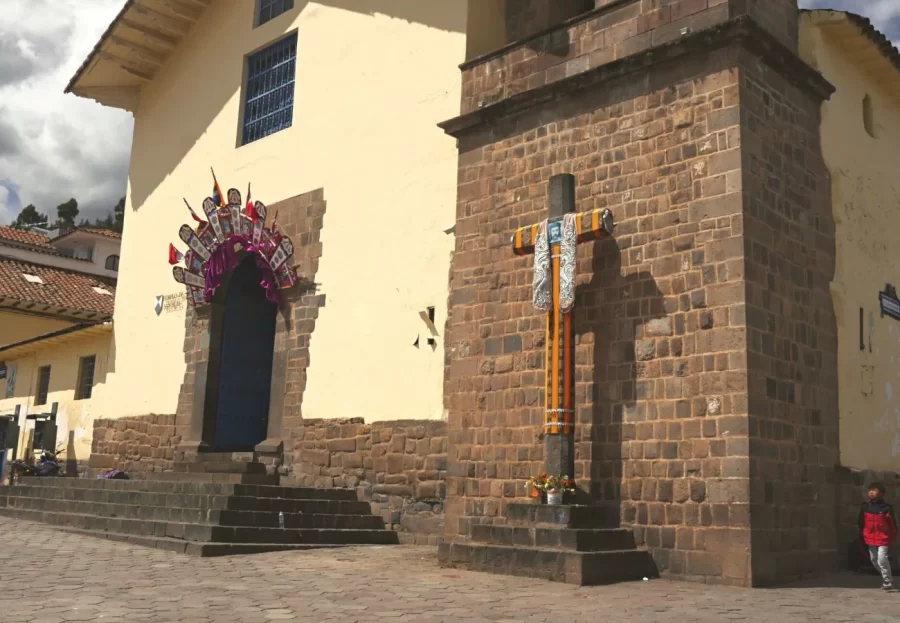

It is probably the first church of colonial Cusco, built of mud on a stone base in the old Inca quarter of Toco Cachi. According to some theories, this temple was built on a huaca to worship the Inca god Illapa, who refers to lightning.
The most outstanding feature of this church is undoubtedly its famous pulpit that according to oral tradition was carved in a single piece of wood by a cabinetmaker from Huamanga, who suffered from leprosy, in a dream he had a vision of Mary with the child Jesus in her arms and a rosary in her hand, who told him:
''If you wish to cure your illness, look for me in Cusco''.
Coincidentally, he was hired by the bishop to work in the convent of Santo Domingo in the city of Cusco, he immediately accepted the job hiding his illness, but the disease worsened and when the time came when his wounds could no longer be hidden, no one wanted to give him asylum for fear of catching that terrible disease.
Not finding shelter, he decided to enter a small and humble chapel where he recognized the image of the Virgin Mary that appeared to him in his dreams. Immediately he knelt down to pray asking the Virgin to cure his ailments, immediately rose petals came out of the rosary that cured his wounds and left him healthy.
The miracle was soon news, giving the new name to the Virgin of Buen Suceso and the cabinetmaker in gratitude to the Virgin carved in a single trunk a new pulpit where is the image of the Virgin with the Child and the rosary, working 4 years without rest until the end of his work for the Virgin who had saved him.
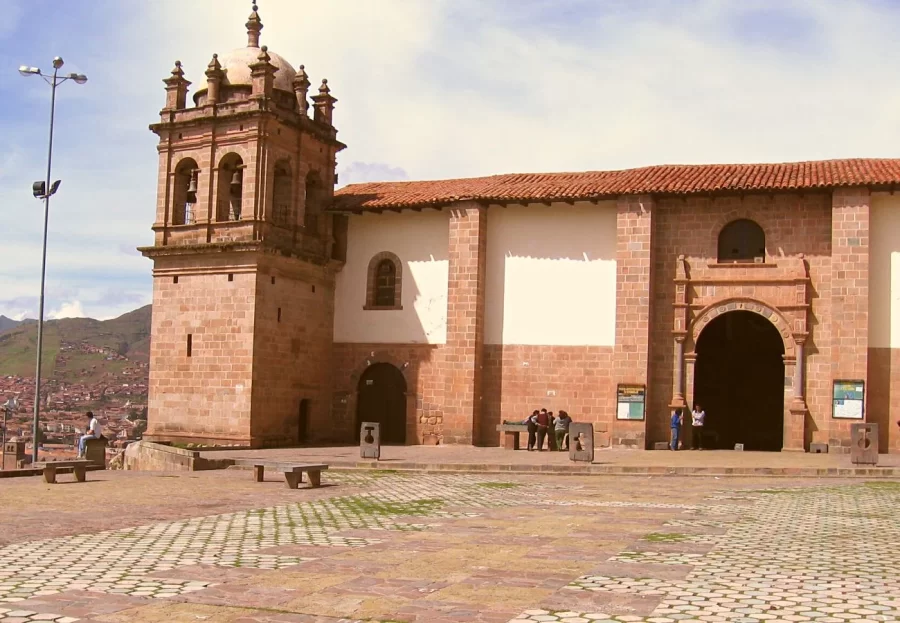
The San Cristobal Church is built on the grounds of what in Inca times was the great Colcampata, Manco Capac's palace. The temple was built in the sixteenth century, on the initiative of the Inca Prince Paullu Inca, who was the brother of Manco Inca, Huascar and Atahuallpa.
Paullo supported the Spanish conquerors against the revolts caused by the conflicts of his brothers, so that the colonizers themselves gave Paullu the land and lots of Colcampata, also he was baptized in the Catholic religion, receiving the new name of Christopher Paulo Inca.
He built a small Indian chapel in the esplanade of the colcampata, dedicated to the patron saint San Cristóbal.
During the earthquake of 1650 the chapel suffered great damage, so the bishop Manuel de Mollinedo financed the reconstruction that was in charge of the Cusquenian master Marcos Uscamayta, only the tower and the wall of the entrance are made completely in stone the rest of the construction was kept in adobe.
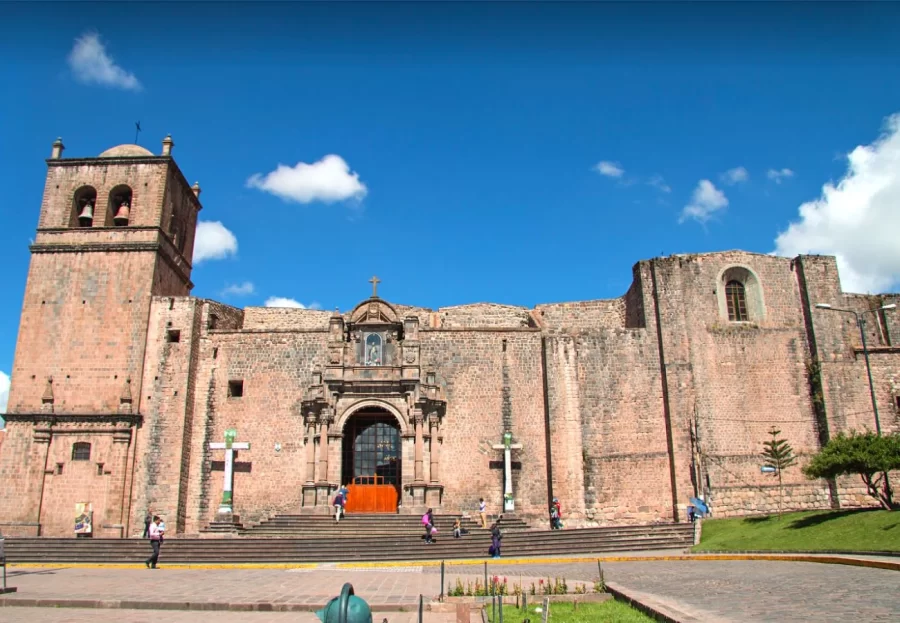
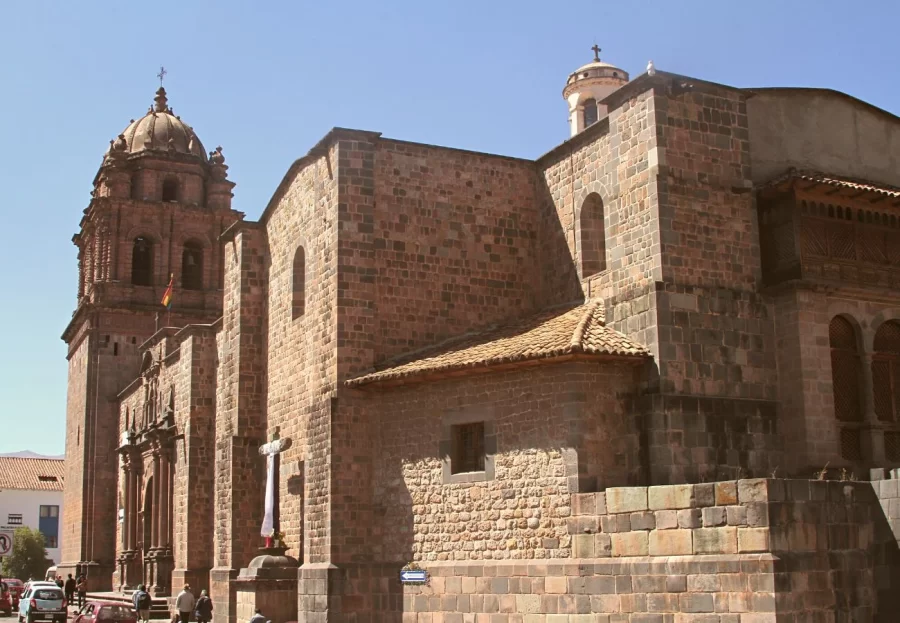
The Franciscans arrived in Peru during the year 1534, they had small provisional chapels until finally 1549 when they moved definitively to the lands of Hernando Pizarro where the hospital of San Lazaro was located.
The viceroy Francisco de Toledo in 1572, ordered the construction of a temple for San Francisco de Asis, currently the church of San Francisco.
The original temple was dismantled to start a new more modern complex in 1645, however, progress was delayed by the famous earthquake of 1650, finally and after great efforts the temple was completed in 1653.
Part of the convent and cloister of the church was ceded for the boys' school ''Ciencias'', the school ''San Francisco de Asís'', and for a time during the XIX century also for the girls' school ''Educandas''.
Among the outstanding attractions are the multilingual Bible, written in five languages, the catacombs, where numerous human remains have been found, and a painting entitled "Genealogy of the Franciscan Order," which contains 683 characters of the 12 branches of the Franciscan Order and is considered the largest painting in America.
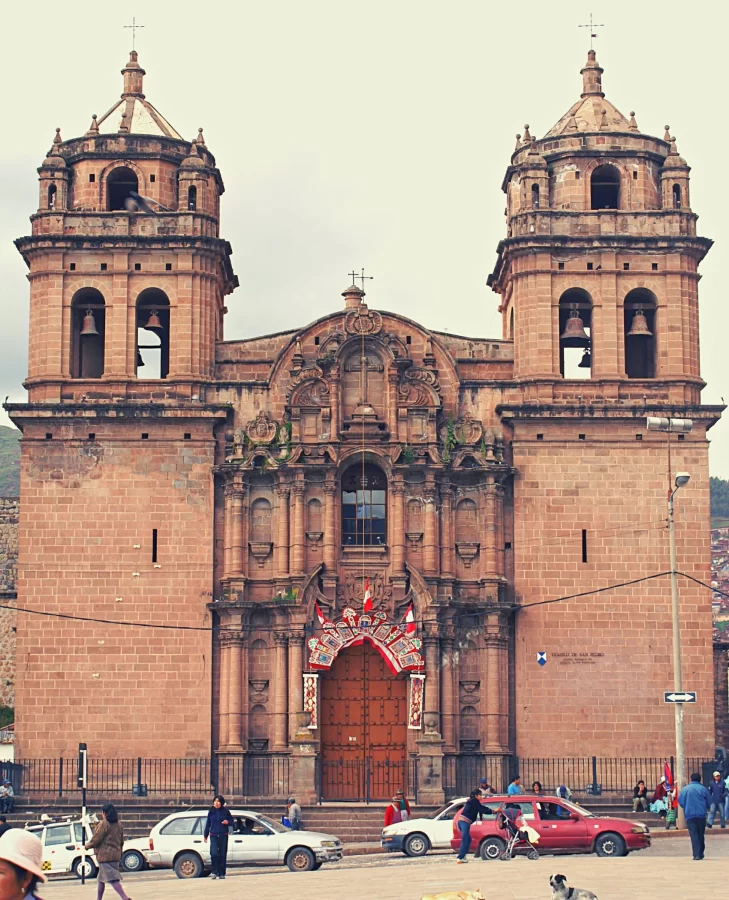
In the year 1556 the Hospital de Nuestra Señora de los Remedios was built, known mostly as the ''Hospital de los Naturales'', unfortunately during the earthquake of the year 1650 this hospital was devastated, leaving only one room of the hospital standing.
Because of the earthquake there were many wounded and injured people, so the hospital had to continue to function, the pastor of the small chapel began the partial reconstruction of the hospital ending in 1657 to accommodate the sick and wounded.
But it was in the year 1688 with financing of Bishop Manuel de Mollinedo under the direction of the Cusquenian architect Juan Tomás Tuyro Tupac that the current imposing temple of San Pedro with two front towers and a facade of 3 bodies.
During the 1950 earthquake the temple suffered no major damage other than some cracks in its right tower, these cracks can still be seen today.

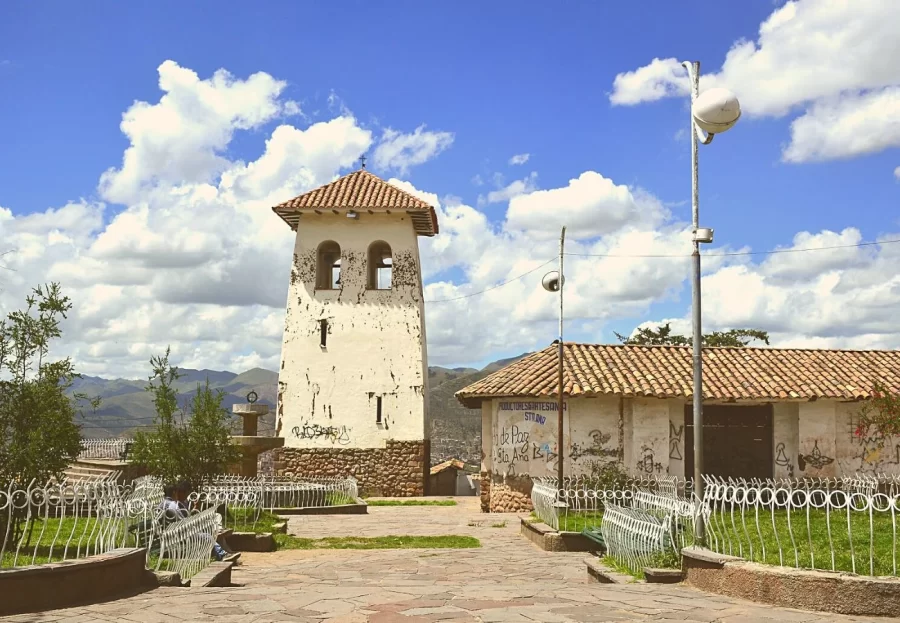
The temple of Santa Ana was one of the first 5 indigenous churches in the city of Cusco. Built precariously in adobe in 1559 on a sacred huaca in the old Inca neighborhood of Qarmenqa.
The temple of Santa Ana was the most affected in the earthquake of 1650, nothing was left of the temple, since its walls were already in poor condition as can be seen in the first plan of the city of Cusco in 1643.
Bishop Mollinedo, patron of Cusco, was the one who informed the Spanish crown of the terrible situation of the temple of Santa Ana, so that sufficient funds were sent for its restoration.
The church of Santa Ana is currently one of the simplest, with adobe walls covered with white plaster, simple tile roof, the former mayor Daniel Estrada Perez ornamented the courtyard of the temple turning it into a square with a viewpoint to the city of Cusco celebrate the feast of the Lord of the Cabildo and the patron saint of the temple participates annually in the feast of Corpus Christi.
The convent and temple of Santa Catalina, of the Dominican order was built on an ancient Inca enclosure, the AcllaWasi or ''Casa de las Escogidas'', these Inca plots were given to Antonio de la Gama, later acquired by Bishop Fernando de Mendoza who donated the land to the Dominican nuns.
Thus, in 1605, the convent of Santa Catalina was inaugurated, receiving Melchora Clara Coya, a descendant of Huayna Capac, as one of the first aspirants to religious life, and this was an exceptional case, since mestizo women were not allowed.
The convent was damaged during the earthquake of 1650, so the reconstruction of the cloisters and the church of Santa Catalina began and was completed in 1669.
Currently and since 1975 it opened its doors as a museum, in which important paintings of the Cusquenian School are exhibited, which portray scenes from the life of Saint Catherine of Siena, as well as imposing altarpieces carved and finished in gold leaf.
The museum has representations of the daily life of the Dominican nuns, as well as all the activities they learned and developed in their religious life.
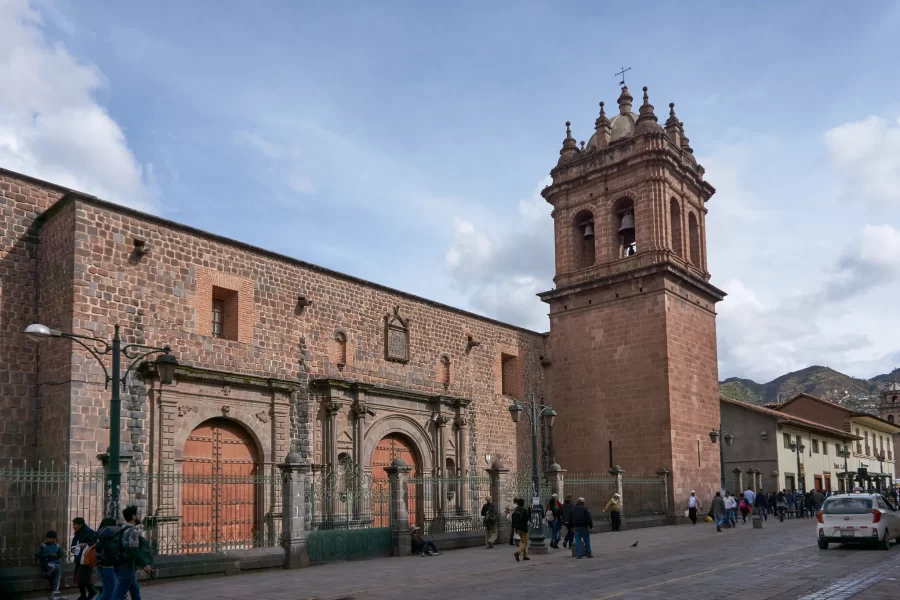
The church and convent of Santa Clara was one of the first shelters in the imperial city that welcomed orphans, half-caste and Inca descendants, during the year 1560 it was elevated to the rank of monastery fulfilling the double function of beaterio and shelter for orphans.
Then in 1602 and thanks to the donation of the Cusquenian Beatriz Villegas who financed the construction of the temple that we currently see in the imperial city. This temple during the earthquake of 1650 and 1950 suffered no damage except in the bell tower, which was restored instantly.
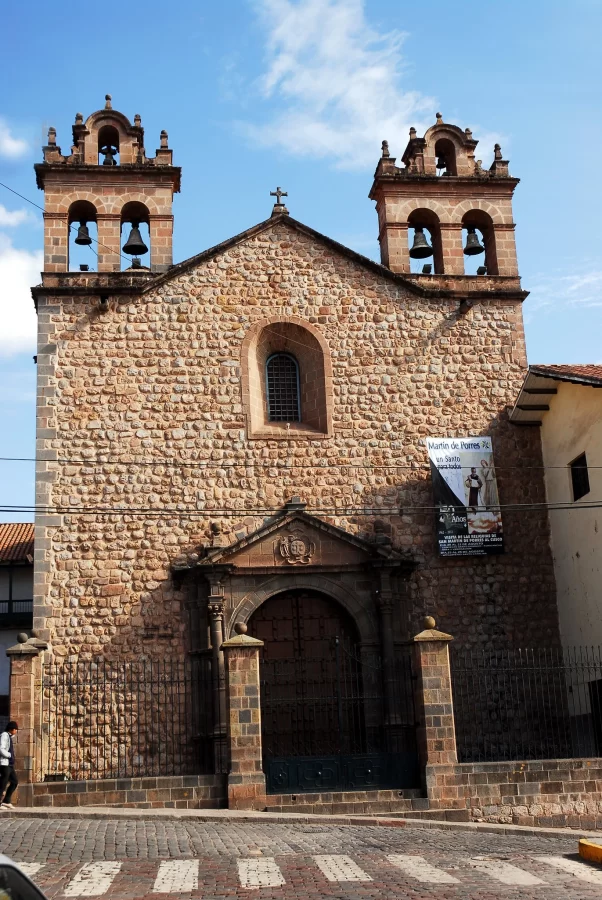
The Monastery of the Discalced Carmelites of San José and Santa Teresa, today more popularly known as the Convent of Santa Teresa.
The land was originally owned by Diego de Silva y Guzman and was known for its majesty, as the Silva house. This large building was donated in 1649 to build a Mercedarian school, which was never built.The Monastery of the Discalced Carmelites of San José and Santa Teresa, today more popularly known as the Convent of Santa Teresa.
The land was originally owned by Diego de Silva y Guzman and was known for its majesty, as the Silva house. This large building was donated in 1649 to build a Mercedarian school, which was never built.
Many years passed until in 1672 Antonio de Zea obtained the Silva House with the help of Queen Maria of Austria and with her authorization, founded the monastery of the Order of Saint Teresa in Cusco; who also granted 100,000 pesos for the construction of a temple and to initiate the procedures and processes for the arrival of the Teresian nuns in Cusco.
Finally, in 1675 the first founding nuns arrived in the city of Cusco, while the construction of the temple and monastery was completed in 1678.
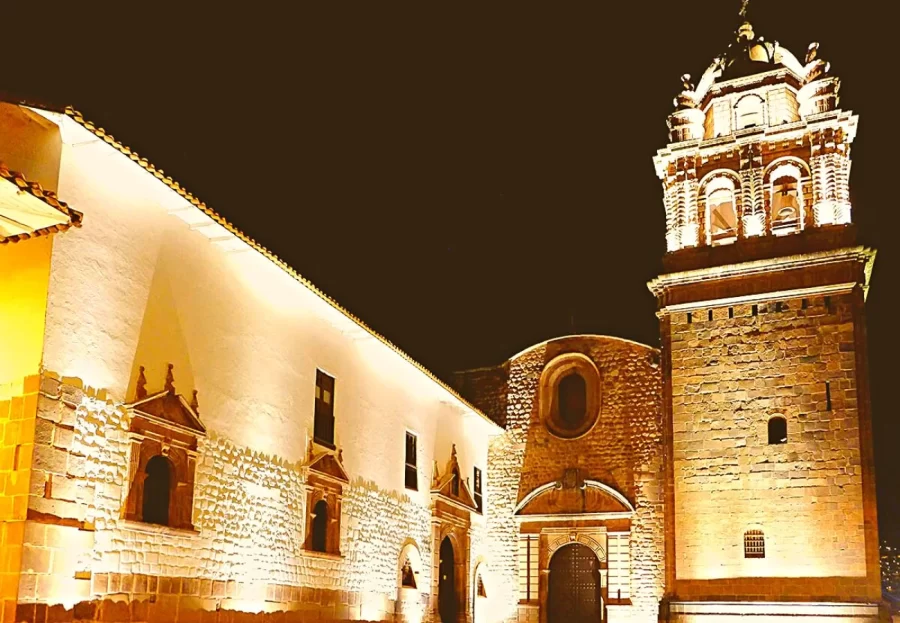
The temple of Santo Domingo is built on what was the most important religious precinct of Inca times, the Qoricancha.
During the Spanish colonization in 1532, the space of Qoricancha was given to Juan Pizarro, brother of Francisco Pizarro, who before his death left the Qoricancha as a donation to the Dominican order, so that the Convent of Santo Domingo could be built there in 1534, being the first Dominican Convent in Peru.
Actualmente, se puede observar como los muros incas y la construcción colonial se fusionan, parte del templo inca es ahora exhibición como museo de Sitio, en el que se pueden observar las salas incas en las que se rendía adoración a los diferentes Dioses Incas como el Sol (Inti), la Luna (Killa), el Rayo (Illapa), entre otros.
Several chroniclers have referred to the Qoricancha as the most important temple of the Inca Empire, and the richest in terms of gold and silver works.
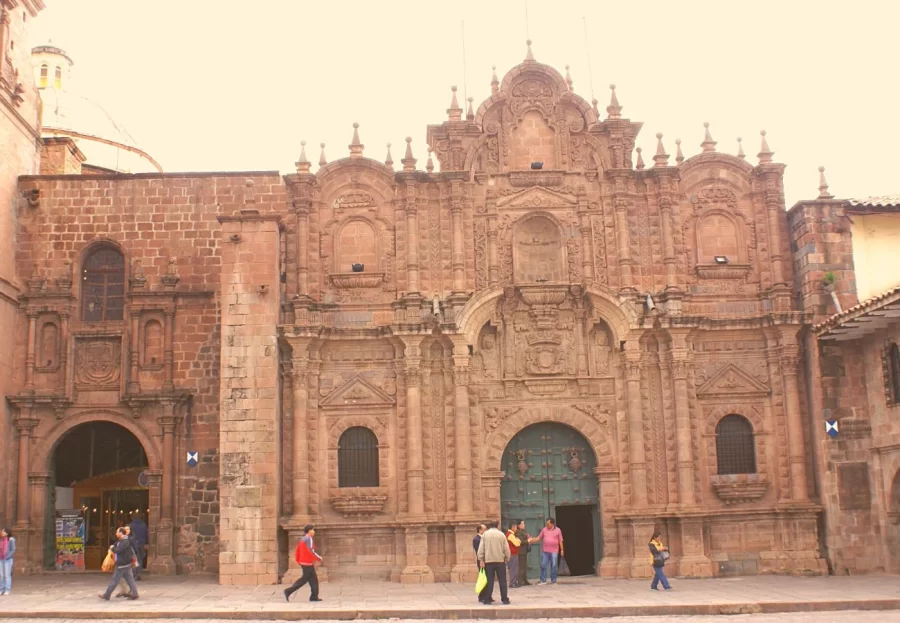
At the time of the arrival of the Spaniards, the distribution of the Inca plots and fields among the colonizers took part of the Suntur Wasi, as a barracks and shelter; also giving rise to the legend of the appearance of the apostle Santiago and the Virgin Mary that gave the triumph to the conquerors, during the fire caused by Manco Inca.
Thus, the fire consumed a large part of the city, leaving the Suntur Wasi intact. The story goes that the apostle Santiago had descended from the heavens on his white horse, defending the place, while the Virgin Mary covered the space with her cloaks, protecting the Spaniards from the fire,
Being the conquerors the ones who won in the confrontation, this same place would be where they built the church of the triumph, Bishop Vicente Valverde celebrated there the first mass of Cusco, the wooden cross that they brought from Spain was placed on the main altar, today known as the cross of the conquest.
This was the first catholic construction in Cusco, and it was considered the cathedral of the city until 1654 when the main cathedral that we know today was built.

This church is located a little further away from the center of the city of Cusco, in the district of the same name. District in which were exiled different royal panacas of the Inca empire, which over time were disappearing, and it is also for them that is ordered to build this Catholic temple.
Its construction began in 1560 and concluded in 1799, it contained important works of painting of the Cusco school, by the Cusco painter Diego Quispe Titto, who was the only indigenous painter of Cusco who came to the Vatican to learn and improve his techniques, some of his works are still preserved in the temple of San Sebastian.
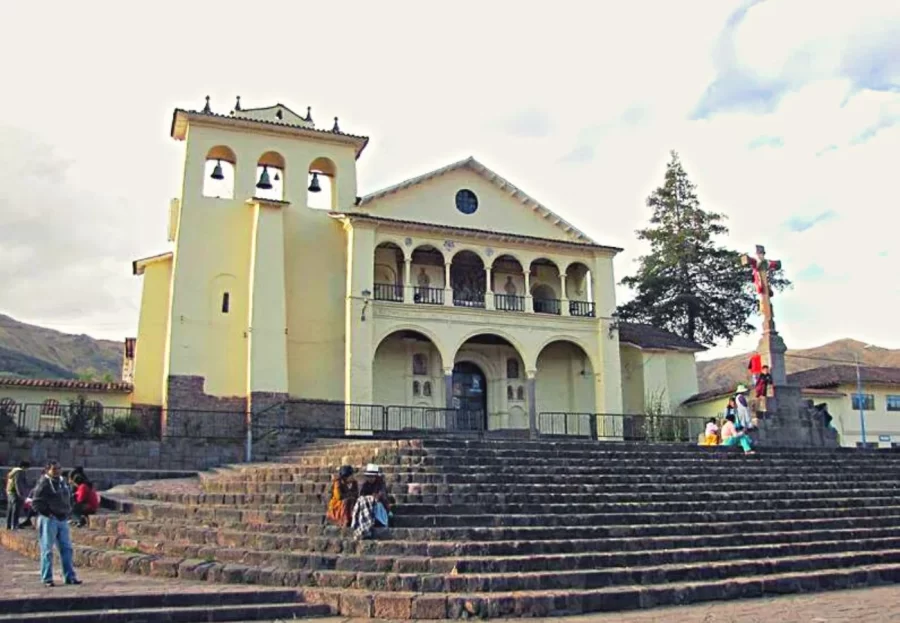
The church of San Jerónimo was erected in an area called Waqoto, where the royal panacas were exiled, as well as in the district of San Sebastián.
This temple was built at the end of the XVI century, being directed specifically to initiate the evangelization of the natives.
It is so it was one of the first to be built and for its good structure is a temple that has not suffered alterations in terms of its architecture; so it is the right temple to appreciate the primary constructions of the city of Cusco, with Adobe walls and a gable roof and a bell tower on the outside, the style of the temple is Renaissance.
If you want to visit the different churches found in the city of Cusco, you should take into account these recommendations:
The city of Cusco, not only has churches or temples, it also has religious museums, archaeological and other tourist sites that teach us all our culture and history. If you want to visit any of them, just follow our Terandes page where we will keep informing you about each one of them..
